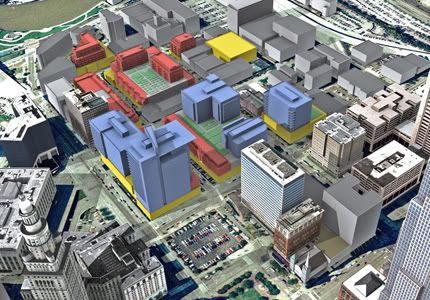
Originally Posted by
Pete

Again, I challenge this assumption... And point out while you are saying history has nothing to do with it, you then immediately make a comparison to 1970.
It seems impossible to consider any demolition in this town without people channeling the ghost of I.M Pei.
I know it *feels* like we are demolishing a lot of buildings but I can also Google Tulsa or virtually any other city and find they have recently demolished their fair share, too. It happens in L.A. all the bloody time.
I have come to believe that we all have bought into our own rhetoric, which continues to be presented as proven fact: "We did much more damage to our core than other cities! We still have much bigger urban holes! We continue to demolish at a faster rate! As a community, time and time again we have proven we don't value history or architecture!"
I'm not trying to be argumentative I am merely putting forth the idea that what OKC did and continues to do was/is pretty typical of other cities. And I've come to this conclusion by objective study and comparison over the last five years or so because I found myself advancing these same ideas and realized I was just repeating what I had been told by others, and it really didn't match what I was learning when looking at the history of other communities.
Just as someone can cite anecdotal examples of other cities embracing their historical buildings, I could quickly list 30 in OKC that have recently been remodeled to very high standards.
This is my challenge: Objectively PROVE that OKC cleared more blocks than most other U.S. cities, that we have taken longer to fill holes, and that we continue to demolish buildings at an abnormal rate.
Otherwise, perhaps we should stop beating this drum, because it comes up every single time a building is considered for demolition and I'm not convinced the points being made are even correct, let alone relevant.
And BTW, I am very much a preservationist at heart. However, there will always be times when demolition is the correct course of action, and when that decision has to be made, we always want to punish people for the perceived sins of the past.
I say all of this with the utmost respect for those who have a contrary opinion and for all the wonderful buildings we have lost. I am merely trying to make people think about what has been repeated on this subject ad nauseum, and largely with any objective support or context.






 Reply With Quote
Reply With Quote



Bookmarks